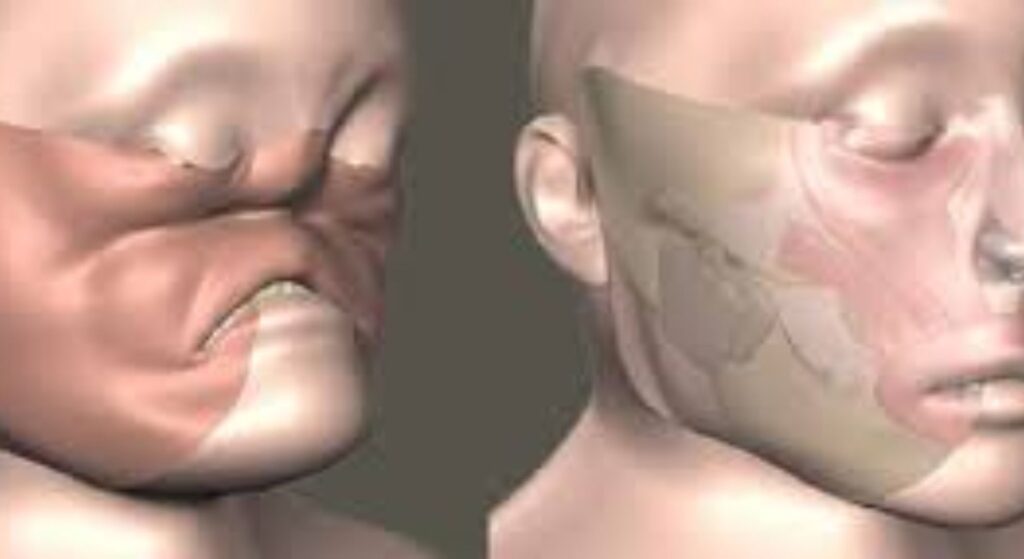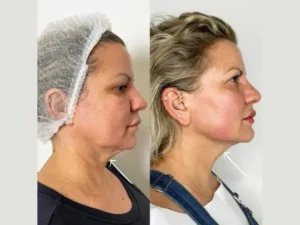
face transplant image
A face transplant is one of the most complex and life-changing procedures in modern medicine. It involves replacing a patient’s severely damaged or disfigured face with that of a deceased donor. This groundbreaking surgery aims to restore not only the appearance of the face but also its functions, such as speech, eating, and breathing. While a face transplant can drastically improve a person’s quality of life, the journey doesn’t end with the surgery. Recovery and post-operative care are essential for the success of the procedure.
In this article, we will explore the crucial steps that happen after a Face transplant, including the recovery process, potential complications, long-term care, and the face transplant cost. Let’s delve deeper into what a patient can expect once the surgery is complete.
What is a Face Transplant?
A face transplant is a highly specialized surgery performed on patients with severe facial injuries or disfigurements due to accidents, burns, congenital defects, or diseases. During the procedure, surgeons remove the damaged facial tissue and replace it with a donor’s facial tissue, including skin, muscles, and sometimes bones. A face transplant can help restore facial features and improve essential functions like speaking, breathing, and eating, significantly enhancing a person’s quality of life.
The first successful face transplant was performed in France in 2005, and since then, this procedure has evolved, offering hope to patients who previously had few treatment options.
The Recovery Process After a Face Transplant
The recovery period after a face transplant is a multi-phase journey that requires immense patience, emotional strength, and rigorous medical attention. Let’s break down the key stages of recovery:
1. Immediate Post-Surgery Care
The first few days after a face transplant are the most critical. Following the surgery, patients are closely monitored in the intensive care unit (ICU) to ensure there are no immediate complications, such as organ rejection or infection.
- Rejection Prevention: After a face transplant, the patient’s body may attempt to reject the new tissue as it would with any organ transplant. To prevent rejection, patients must take immunosuppressive medications for the rest of their lives. These medications reduce the body’s immune response, ensuring that the donor’s tissue is not attacked.
- Monitoring and Recovery: Surgeons will regularly check for any signs of infection, graft failure, or rejection during this phase. It’s important to keep the donor’s face tissue alive and functioning, which requires close monitoring of blood flow to the face, the skin’s ability to heal, and nerve function.
2. Hospital Stay and Initial Healing
Patients typically remain in the hospital for several weeks post-surgery. This period allows doctors and nurses to monitor for complications and manage the initial stages of recovery.
- Pain Management: As with any major surgery, patients will experience pain and discomfort, especially during the early stages of healing. Pain management is crucial, and medications will be provided to ensure comfort during recovery.
- Physical Therapy: During this stage, patients may begin physical therapy to help with facial muscle rehabilitation. Exercises may focus on improving movement in the face, such as smiling, blinking, and speaking, which are essential for regaining facial function.
3. Long-Term Recovery
Once the patient has stabilized and is ready to leave the hospital, the focus shifts to long-term recovery and rehabilitation. The recovery journey continues for months and sometimes years as the patient adjusts to their new appearance and the changes brought on by the surgery.
- Physical and Occupational Therapy: After the hospital stay, patients undergo months of physical therapy to regain full functionality of their facial muscles. Occupational therapy may also be involved to help patients adjust to daily activities like eating, talking, and grooming.
- Psychological and Emotional Support: The psychological aspect of recovery is often as important as the physical. A face transplant not only changes a person’s appearance but also requires significant emotional adaptation. The surgery can trigger intense emotional reactions, including feelings of grief, anxiety, and identity issues. Long-term counseling and support from psychologists, support groups, and other transplant recipients are important aspects of the recovery process.
4. Follow-Up Care
After the initial recovery, follow-up visits to the transplant center are essential to monitor the success of the transplant and ensure that the face remains healthy. These visits may include:
- Biopsy and Monitoring: To check for rejection, doctors may perform biopsies or imaging tests. These regular appointments are essential to ensure that the transplanted tissue is being accepted by the body.
- Adjusting Medications: Over time, immunosuppressive drugs may need to be adjusted to balance the risk of rejection with the possibility of side effects, such as infections or cancer. Regular blood tests help doctors tailor the treatment for each patient.
- Nerve Regeneration: One of the key goals of a face transplant is to restore the function of facial nerves. However, nerve regeneration is a slow process, and it may take several months or even years before patients regain full control over their facial expressions.
Potential Complications After a Face Transplant
While a face transplant can greatly improve a patient’s life, there are potential risks and complications that need to be monitored after surgery:
- Rejection: As with any organ transplant, there is a risk of the body rejecting the new tissue. This can occur if the immune system recognizes the transplant as foreign and attacks it. Rejection can be acute or chronic, and in some cases, it may require another transplant.
- Infection: Immunosuppressive medications increase the risk of infections. Post-surgery, patients are highly susceptible to bacterial, viral, or fungal infections. It is crucial to follow strict hygiene and medical protocols during the recovery phase to minimize this risk.
- Graft Failure: In rare cases, the transplanted tissue may not take properly, leading to graft failure. This can be caused by inadequate blood flow or issues with the healing process. If this occurs, additional surgeries or treatments may be needed.
- Cancer Risk: Long-term use of immunosuppressive medications increases the risk of developing certain types of cancer. Patients need regular screenings to detect early signs of malignancies.
Face Transplant Cost
The cost of a face transplant can vary significantly depending on several factors, such as the complexity of the surgery, the hospital, and the country where the procedure is performed. On average, the cost of a face transplant in the U.S. can range from $300,000 to $1,000,000 or more. This includes the surgery itself, hospital stays, immunosuppressive medications, and post-surgery rehabilitation.
In addition to these costs, patients may also face ongoing medical expenses for follow-up appointments, psychological counseling, and physical therapy. Many patients require lifelong treatment to prevent rejection and manage the risks of immunosuppressive medications. Some insurance companies may cover part of the costs, especially if the transplant is deemed medically necessary, but not all expenses are typically covered.
Conclusion
A face transplant is a transformative and life-changing procedure that can restore not only the appearance but also the function of a patient’s face. However, the road to recovery is long and requires a combination of physical, emotional, and medical care. Patients must adhere to strict medical regimens, including the lifelong use of immunosuppressive drugs and follow-up care to monitor the health of the transplant.
While the Face transplant cost can be significant, the benefits of regaining facial function and improved quality of life can be immeasurable. It is crucial to understand the complexities of post-surgery care to ensure the best possible outcomes for those undergoing this pioneering procedure. With advancements in medical technology, face transplants are becoming more successful, offering hope to patients who have suffered from severe facial injuries or disfigurements.
Read More ( Click Here )


